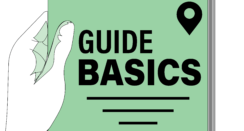Choosing clothes for your child, and, above all, footwear, is a very important point in relation to their development. Depending on the age of the children, clothing fulfills one or more functions. As they get older, the function of clothing and footwear will be mainly aesthetic, used to build one’s own personal identity. Obviously, personal grooming will also fulfill its protective and ergonomic function, but as age advances, these points fade.
Thus, we consider personal grooming to be the choice of clothing and footwear that allows us to enjoy these three basic functions: ergonomics, protection, and aesthetics. We are going to focus on the choice of clothes from the beginning, from the birth of the child.
What do you need to choose clothes for your child?
- Know the characteristics and needs of your child.
Instructions for choosing clothes for your child
To choose clothes for your child, the first thing is to know what function clothes and footwear play.
- The ergonomic function is to allow freedom of movement. This is necessary to facilitate diaper changing, improving child-adult interactions. Also, so that the child acquires autonomy in her habits (she can dress and undress) and in her motor and cognitive development.
- The aesthetic function, as we have already indicated, serves to indicate some aspects related to personal identity.
- Finally, the protective function refers to perspiration and temperature.
- Depending on the age and the functions to be covered, we have to:
- Our baby’s first clothes should be cotton.
- Ergonomically, we will choose clothes that are easy to remove and put on. The most appropriate thing will be to have sets of two pieces with rubber that does not squeeze.
- It is also necessary that while your child wears a diaper, they dress in bodysuits with an opening in the crotch.
- Likewise, for the first months of life, the bodysuit must also have an opening on the shoulder so as not to imprison the baby’s head when putting it on.
- At first, the closures of the garments should be adhesive tapes and short loops. Later, we will introduce brackets, hard velcro and flat buttons.
- If the garments do not have a closure, we must choose those that are elastic enough.
- We will avoid seat belts and safety pins.
- The bibs should be put on from the age of three as they are difficult to put on and take off, especially when the child is not able to stand alone.
- Always choose clothes in the child’s size. Big clothes can cause accidents and small clothes prevent freedom of movement.
- Regarding the aesthetic function, we must not use stereotypes too much so that children grow up with their own criteria -and, consequently, not dependent-. This does not mean that we do not wear clothes or shoes in the typical pink and blue colors, but we must not let these be decisive in their psychosocial development.
- In general, we should not move for the beauty of the garment but for its comfort.
- Choose clothes that perspire a lot since children up to the age of six sweat a lot, either due to the large number of hours of sleep or because they do a lot of physical activity.
- Likewise, we will try to use garments according to the season in which we find ourselves, seeking to preserve heat in winter and cool down in summer.
- We will avoid 100% nylon garments, tulle, leather or imitation leather and untreated wool.
As for footwear, your choice will be conditioned by the needs of the child:
- We must accurately measure the child’s foot so that the shoe adjusts in length, width and depth.
- Until 6 or 8 months, the only function of the shoe is shelter. The soles must be flat and the shoe, in general, will be very flexible, turning and bending very easily. The ideal is to wear booties and socks.
- Between 6 or 8 months and 12, we will choose shoes with a reinforced toe and heel, with a smooth and flexible sole. These features make crawling possible and easy.
- From 12 months on we will look for light and flexible footwear, with a non-slip sole, with one centimeter of clearance, side and rear reinforcements and a firm instep. Thus, we facilitate the child’s walking and enable physical activity for hours without the foot suffering.
- Until the age of 2, we must change the shoe size every 3 months. After 2 years they will change their number every 5 or 6 months.
- Up to 3 years the shoe will be fastened with velcro. Then with laces, always allowing the shoe to be adapted to the volume of the foot.
- The material will always be breathable.
- We will combine the shoe with cotton or treated wool socks.
Tips for choosing clothes for your child
- Always take care that your child dresses and undresses in a place with favorable climatic conditions (at a younger age, more specifications and less room for movement).
- Do not use long ties for babies. They could become entangled and cause burns or suffocation.
- Always wear underwear.
- It is very important that each child wear their own shoes. The peculiarities of each foot leave a mark on the shoe, being able to modify the gait of another child who uses them later.
- Clean and air out the shoes regularly.
